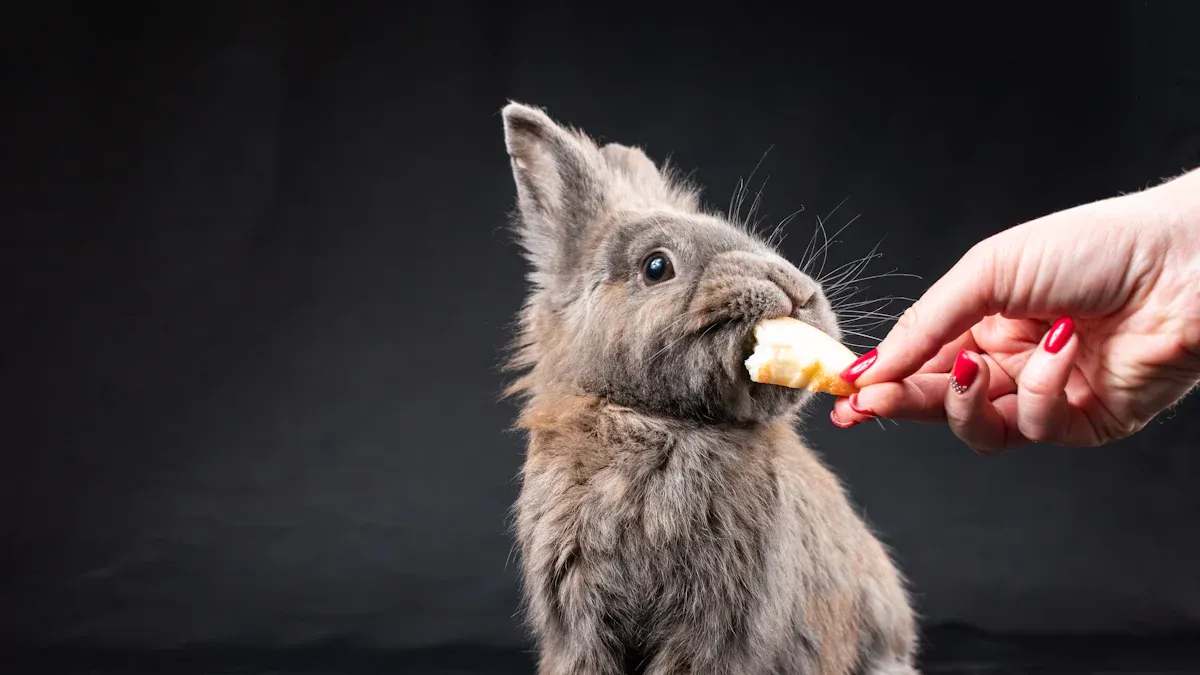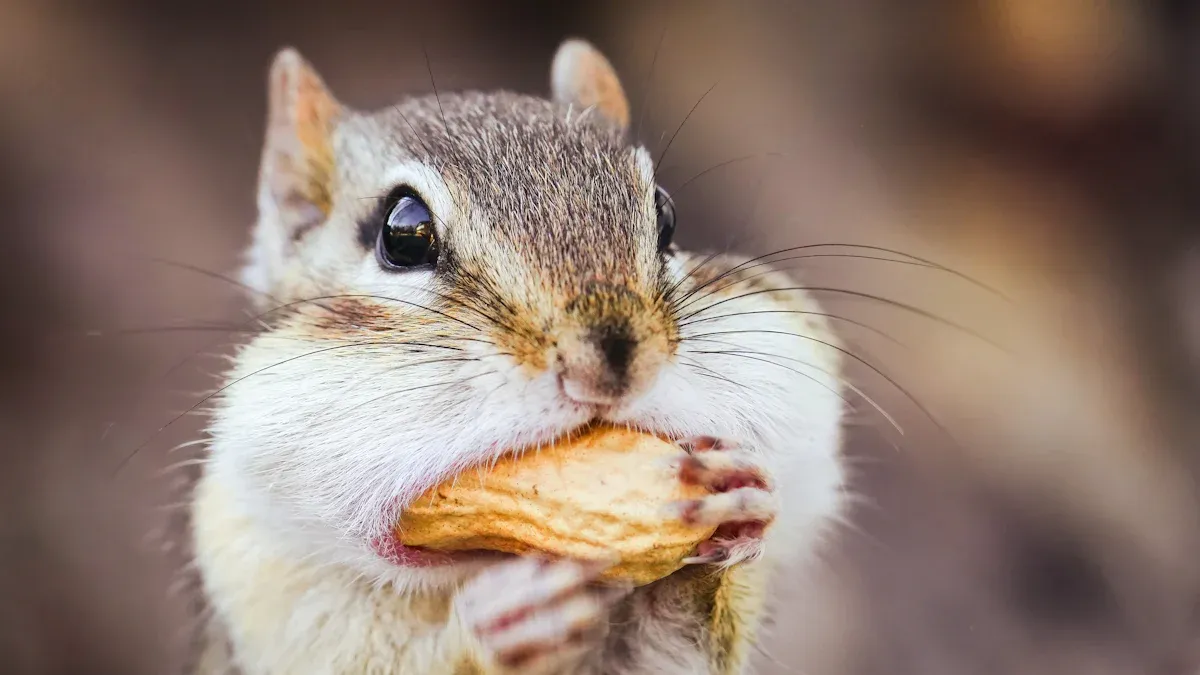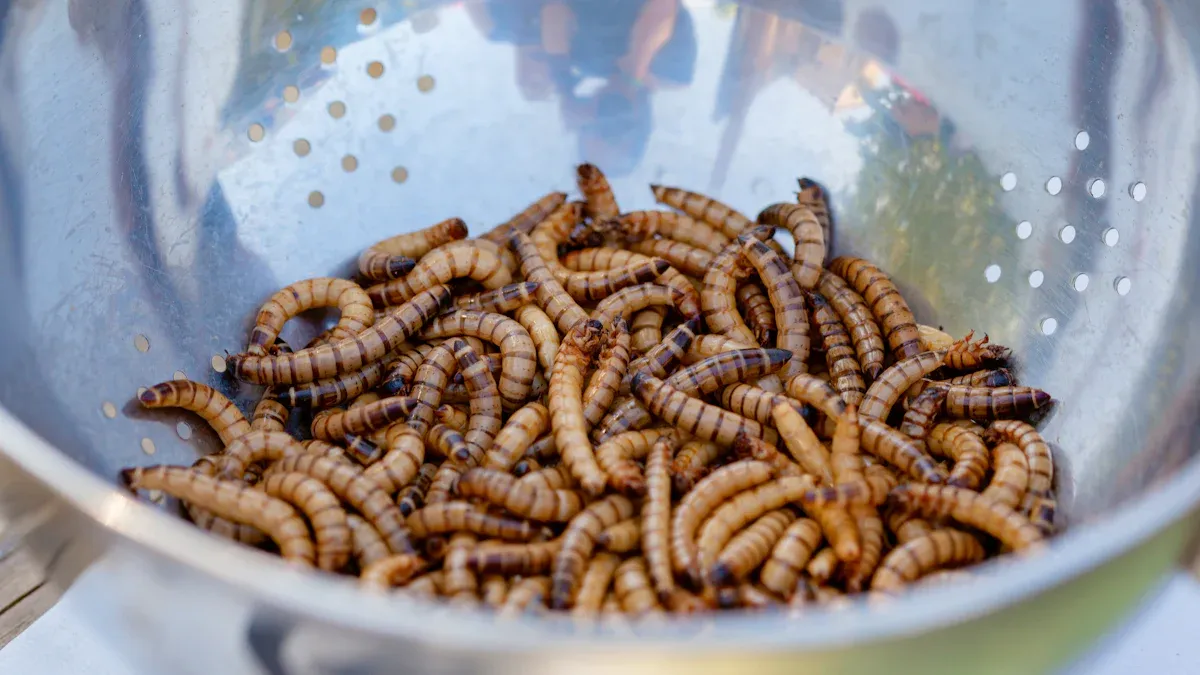
Mealworms in Pet Care bring small mammals high-quality nutrition and mental stimulation. Many pet owners choose them because they offer over 50% protein and healthy fats that help boost muscle and coat health. Market research shows these treats fit natural diets and keep pets happy and active.
Key Takeaways
- Mealworms provide small mammals with high protein and healthy fats that support muscle growth, coat health, and overall well-being.
- Feeding mealworms encourages natural foraging behaviors, keeps pets mentally active, and reduces boredom and stress.
- Offer mealworms as occasional treats in small amounts, choosing dried or live forms based on your pet’s preference and always monitor their response.
Mealworms in Pet Care: Nutritional and Health Benefits

High Protein and Essential Nutrients
Mealworms in Pet Care stand out because they pack a powerful punch of protein and essential nutrients. Small mammals need protein to build muscle, repair tissues, and stay active. Mealworm larvae can contain anywhere from 36% to 74% protein on a dry matter basis. Many studies show that even when mealworms eat different foods, their protein levels stay high—often above 50%. This makes them a reliable source of nutrition for pets.
Did you know? Mealworms also offer important amino acids, vitamins, and minerals. These nutrients help small mammals grow strong and healthy.
Here’s a quick look at how mealworms compare to other protein sources:
| Nutritional Parameter | Mealworm Larvae & Pupae vs. Soybean Meal | Digestibility (Monogastrics) | Statistical Significance |
|---|---|---|---|
| Amino Acid Content | Similar to commercial soybean meal | N/A | N/A |
| Crude Fat & Minerals (WB-fed larvae) | Higher than OB-fed larvae | N/A | P < 0.05 |
| Crude Fiber, Protein, Amino Acids | Lower in larvae and pupae than adults | N/A | P < 0.05 |
| Crude Fat, Fatty Acids, Gross Energy | Higher in larvae and pupae than adults | N/A | P < 0.05 |
| In Vitro Dry Matter & Protein Digestibility | Similar to soybean meal; 30% higher than adults | 30% higher than adults | Significant |
Supporting Growth and Development
Mealworms in Pet Care help small mammals grow and thrive. Their high protein content supports muscle growth and healthy weight gain. Studies show that animals eating mealworms gain weight faster and have better survival rates. For example, rodents often choose mealworms over other treats and eat them quickly. This shows that mealworms are both tasty and beneficial.
- Mealworm protein helps young pets develop strong bodies.
- Essential amino acids in mealworms support healthy bones and organs.
- The fat in mealworms gives pets energy for play and exploration.
Mealworms also work as a safe way to deliver nutrients or even medicine. Researchers found that giving medicine through mealworms works just as well as other methods, without causing stress to the animal.
Enhancing Coat and Skin Health
A shiny coat and healthy skin are signs of a happy pet. Mealworms in Pet Care provide healthy fats, including omega-3 and omega-6 fatty acids, which are important for skin and fur. When mealworms eat foods rich in unsaturated fats, their own fat content improves. This means pets get more of the good fats they need.
- Omega-3 and omega-6 fatty acids help reduce dry skin and itching.
- Healthy fats make fur softer and shinier.
- Vitamins and minerals in mealworms support skin repair and growth.
Pet owners often notice that their animals look healthier and more vibrant after adding mealworms to their diet.
Comparison to Other Treats
How do mealworms stack up against other treats? Many pet treats are high in sugar or fillers, which do not offer much nutrition. Mealworms, on the other hand, are packed with protein and healthy fats. They also have a flexible nutrient profile, which means their nutrition can be improved by changing what they eat.
- Mealworms can have up to 71% protein, much higher than many commercial treats.
- Their fat content ranges from 19% to 43%, providing energy and supporting coat health.
- Unlike some treats, mealworms can be tailored to boost omega-3 and omega-6 content.
Research shows that animals fed diets with mealworms often grow faster and stay healthier than those eating standard treats. For example, fish and shrimp fed mealworm diets had better growth rates and feed efficiency. While these studies focus on different animals, the results show that mealworms are a top choice for nutrition.
Tip: Choose mealworms as a treat for your small mammal to give them a tasty, nutrient-rich snack that supports their health and happiness.
Mealworms are an excellent choice, offering a high-protein, nutrient-packed option that can benefit a variety of reptiles, fish, birds, and small mammals. These little bugs are tasty and rich in amino acids, vitamins, and minerals that support your pet’s overall health. And they love them!
Mealworms in Pet Care: Behavioral Enrichment and Safe Feeding

Encouraging Natural Foraging Behaviors
Small mammals love to explore and search for food. Mealworms in Pet Care can help bring out these natural instincts. When owners hide mealworms in bedding or puzzle toys, pets start to dig, sniff, and hunt. This activity keeps their minds sharp and bodies active.
A six-year field study with over a thousand southern red-backed voles showed how mealworms encourage foraging. Researchers used mealworms as bait and watched how voles picked seeds, chose places to search, and reacted to danger. The study found that mealworms made the voles act more like they would in the wild. They showed real foraging patterns and made choices based on their personalities and the risks around them. This research proves that mealworms can help small mammals practice important skills they need for survival.
Tip: Try hiding mealworms in different spots or inside toys. Your pet will enjoy the challenge and stay busy for longer.
Reducing Boredom and Stress
Boredom can make small mammals feel unhappy or even act out. They might chew on cage bars or dig too much. Mealworms in Pet Care offer a fun and tasty way to break up the day. When pets get to hunt for mealworms, they use their brains and bodies. This keeps them entertained and helps lower stress.
Many owners notice that their pets seem more relaxed and playful after a mealworm hunt. The excitement of finding a treat can turn a dull day into a fun adventure. Pets that stay busy are less likely to develop bad habits or feel anxious.
Appropriate Portion Sizes and Frequency
Mealworms are a treat, not a main meal. Owners should give them in small amounts. Most small mammals do well with one or two mealworms a few times a week. Too many treats can lead to weight gain or upset stomachs.
Here is a simple guide for feeding mealworms:
| Pet Type | Portion Size | Frequency |
|---|---|---|
| Hamsters | 1-2 mealworms | 2-3 times a week |
| Gerbils | 1-2 mealworms | 2-3 times a week |
| Mice | 1 mealworm | 2-3 times a week |
| Rats | 2-3 mealworms | 2-3 times a week |
| Hedgehogs | 2-4 mealworms | 2-3 times a week |
Note: Always watch your pet after giving a new treat. Some pets may need less or more, depending on their size and health.
Preparation Tips and Species-Specific Considerations
Mealworms in Pet Care come in dried or live forms. Both types work well, but some pets prefer one over the other. Dried mealworms are easy to store and less messy. Live mealworms move around, which can make the hunt even more exciting for your pet.
Before feeding, make sure mealworms are clean and safe. If using live mealworms, keep them in a cool, dry place and feed them fresh vegetables to boost their nutrition. For dried mealworms, check the package for freshness and store them in a sealed container.
Different pets have different needs. For example:
- Hamsters and gerbils enjoy digging for mealworms in their bedding.
- Mice like to find mealworms hidden in cardboard tubes.
- Hedgehogs may need mealworms cut in half if they are very small.
Always start with a small amount and see how your pet reacts. If you have questions, ask a vet who knows about small mammals.
Mealworms give small mammals a boost in nutrition and fun. Studies show they offer high protein, healthy fats, and support for growth. Pet owners see happier, healthier pets and enjoy knowing mealworms are a sustainable choice. Responsible feeding keeps pets safe and satisfied.
Article author: Felix
FAQ
Are mealworms safe for all small mammals?
Most small mammals can enjoy mealworms as a treat. Owners should check with a vet before feeding them to pets with special dietary needs.
How should owners store mealworms?
Store dried mealworms in a cool, dry place with a tight lid. Live mealworms need a container with air holes and fresh vegetables for food.
Can mealworms replace regular food?
Mealworms work best as a treat. They do not replace a balanced diet. Small mammals need a mix of pellets, hay, and fresh foods for full nutrition.


